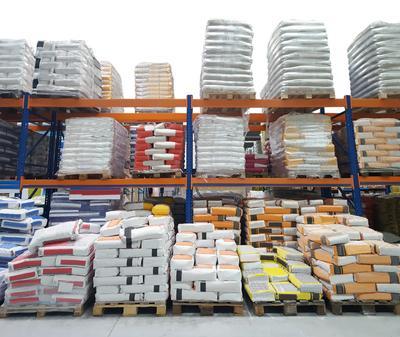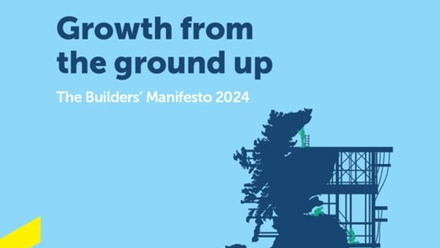Worldwide lockdowns, interrupted production lines, extreme weather conditions, international shipping disruptions, labour and customs issues related to Brexit, rising energy costs, and the war in Ukraine – these are items on a long list of factors that have recently affected and/or continue to affect the global supply chain.
“Current demand for building products is outstripping the capacity to supply the level of products required,” says John Newcomb, CEO of the Builders Merchants Federation (BMF). “The challenges facing our supply chain are part of a wider, complex set of difficulties affecting many other sectors globally.”
Global shipping is 25% below pre-pandemic levels. Lockdowns in China, a major supplier of raw materials and building products, have affected production and freight transport.
Roughly 60% of imported materials used in UK construction comes from the European Union (EU). Despite this year’s UK-EU trade deal, Brexit has lengthened the supply lines for many core supplies from Europe.
Price inflation and rising energy costs also present a concern for builders. Manufacturers will likely increase the price of energy-intensive products to cover production costs. These effects are being felt across Europe with cement plants in Spain closing down due to high operational costs. The conflict in Ukraine also poses a threat to the global supply chain – the severity of which has yet to be seen.
Newcomb says “the rising cost of energy and the consequential impacts of war in Ukraine are the two most pressing issues currently discussed” at the Construction Leadership Council (CLC) Product Availability Group’s regular meetings.
The CLC Product Availability Group, which the FMB is a part of, is co-chaired by Newcomb. It aims to unite organisations across the UK construction industry and materials supply chain, sharing information from its meetings about supply and demand so everyone is aware of issues.
“The CLC is also working with the Department for Business, Energy & Industrial Strategy (BEIS) to build on the industry-wide perspective of the Product Availability Group and the data it can access, using horizon scanning to identify medium-term problems affecting materials and product availability that can be mitigated by an agreed, planned response,” Newcomb says.
Supporting production in the UK
On a positive note, the UK produces the majority of the building products it uses, and, Newcomb says, production is back at pre-pandemic capacity with improved stock levels and most product lines being available. Nevertheless, supply issues, such as longer lead times, persist with certain products. Resolution requires manufacturing backlogs to be cleared and new facilities to come on stream.
“Even at full production, UK brick supplies will be topped up by imports until new UK factories come on stream in 2023/24,” Newcomb explains. “Extended lead times on other products should stabilise once order backlogs have been satisfied, which may take most of this year.”
What materials does the UK produce?
76% of the building products used domestically are produced in the UK, including:
- Aggregates – good stock levels
- Cement – good stock levels
- Bricks
- Blocks
- Roof tiles
- Glass – good stock levels
- Plasterboard – good stock levels

However, the UK still relies heavily on imported raw materials and components to manufacture these products. For example, plastic drainage, gas boilers and certain sealants, coatings and paints are made in the UK but they include imported components or raw materials in their manufacture. Steel is manufactured in the UK, but additional steel products and raw materials used in the steel manufacturing process are imported.
Source: CLC’s Product Availability Working Group.
Which products currently have limited supplies?
- Bricks;
- Aircrete blocks;
- Roof tiles;
- Steel lintels;
- Cable trays and
- trunking;
- Manhole covers;
- Gas boilers;
- Plastic drainage and other plastic products made from polymers; and
- Electrical products using semiconductors.
Source: CLC’s Product Availability Working Group.
What is affecting the building materials shortage?
- The war in Ukraine;
- The changing trade market post-Brexit;
- Ongoing challenges related to COVID-19;
- Gridlock on global shipping routes;
- Demand outstripping supply; and
- Increased activity, particularly among larger construction companies with bigger buying power that have seen a boom in housebuilding and large-scale infrastructure projects such as HS2.
What does the conflict in Ukraine mean for small builders?
Products from Ukraine, Russia and Belarus only accounted for 1.25% of building product imports into the UK last year, but with the war in Ukraine and related sanctions on Russia and Belarus, the conflict may have a bigger knock-on effect on raw materials.
Building materials are likely to increase by 10% on average, with a 20% increase on materials that require high levels of energy to manufacture.
The CLC says the supply squeeze is likely to come from the cost and availability of raw materials such as copper, aluminium ore, oil and bitumen, which are used in the manufacturing process of other building materials, such as:
- Copper – used in plumbing, electrical wiring, cladding, flashing and solar panels;
- Aluminium ore – alloys used in window and door frames, air conditioning and heating components, solar protection, exterior facades;
- Oil – fuel, plastics (used in polymers), engine oils and lubricants;
- Bitumen – road and path surfacing, roofing, plastics, sealing and insulating materials eg paint and damp proofing; and
- Neon – semiconductors that are used in gas boilers and microchip production (Ukraine was producing around 70% of global neon exports just before Russia’s invasion).
Many countries have banned Russian ships and suspended cargo due to the sanctions. Added to that is the fact that Ukrainian and Russian nationals make up 15% of the global shipping workforce. Expect labour shortages to have a further effect on shipping supplies.
What does the UK need from international supplies?
“The vast majority of our building products are manufactured here in the UK but we will always be reliant on imports for certain materials – timber from Finland and Scandinavia being a prime example,” says Newcomb.
“While I’m certain that manufacturers are seeking improvements and certainty in their supply lines, I doubt that it will ever be possible to bring everything onshore.”
The UK relies on the global supply chain for:
- Many different tools;
- Fixings;
- Sanitaryware;
- Shower enclosures;
- Cable trays;
- Porcelain tiles;
- Natural stone;
- Polymers required for plastic drainage;
- Specialist chemicals for paint and sealants; and
- Semiconductors and microchips in gas boilers and other building-related electrical systems.

What should FMB members do?
The FMB is campaigning for supply chains to be kept open and for SME builders to be treated fairly with transparent access to allocations where these apply. Advice from the FMB and CLC includes:
- Plan ahead and order in advance – these are the most important actions FMB members can take as most products are available but with longer lead times.
- Download findings from the CLC Product Availability Group’s monthly meetings from the Construction Leadership Council, or from the FMB website.
- Add flexibility clauses to your contracts to manage price inflation, and try to avoid fixed-price contracts. Updated FMB contracts are available to members online.
- Open up communication lines throughout the supply chain, and be sure to communicate regularly with your clients to address changes.
- Work closely and collaboratively to manage challenges and plan future work.
- Keep up to date with the latest news and FMB guidance on building materials.
This article was originally published in the June / July 2022 edition of Master Builder magazine. Members can login to view a copy, non-members can request the latest copy via email.



